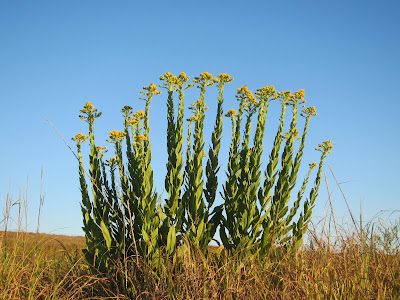A TIME OF CHANGING PALETTES AND TEXTURES
photos from 09 Sept 2012 followed by 17 oct 2012
 |
 | |
the last of the solidago reds
last of the yarrow reds
A TIME OF SEED DISPERSAL
solidago seeds
Asclepias taking flight
Bidens hitching a ride...Note this is Bidens cernua NOT Bidens josephia...
A TIME FOR STAGES OF DECLINE
gentian september blooms and october seedheads
SIDETRACKS
--I also started wondering about the hawk population. I've read where they say it is increasing, particularly near/in urban areas. I usually see two hawks north of Dodge at 168th in the dead trees. Their hunting ground is probably Northwest Park. I also see a resident one on telephone poles and wires on 180th between Maple and Fort. So when we traveled to the Sandhills last weekend, we did a hawk count starting from Hwy 92 going west. We saw a total of 25 while on the road.
--And lastly to ponder - Theories are great because they don't have to be based on proof. So, my theory is that GNOMES RULE THE UNIVERSE!!!
gute nacht


























